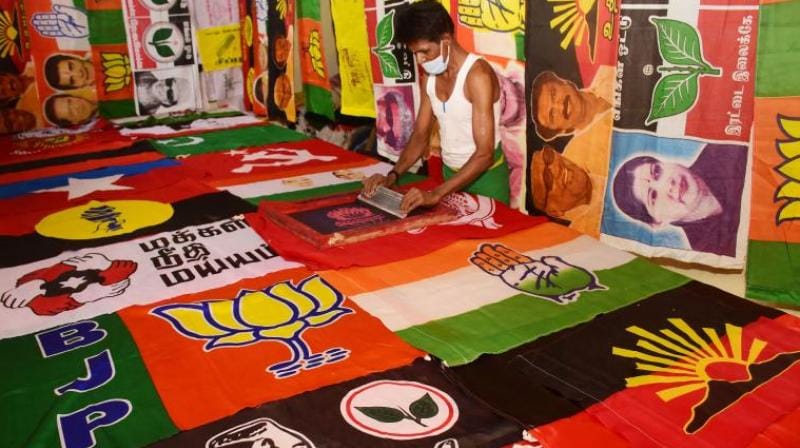Introduction
Politics in Tamil Nadu has always been high-energy, with passionate supporters, powerful leaders, and massive rallies. But as we approach the 2026 Tamil Nadu Legislative Assembly election, one thing is clear—digital marketing will play a bigger role than ever before. Traditional campaigning through posters, loudspeakers, and roadshows is no longer enough. With millions of voters spending time on smartphones, Facebook, Instagram, YouTube, and WhatsApp, candidates must build a strong digital presence to win hearts and votes.
In this blog, we’ll explore how digital marketing helps political candidates in Tamil Nadu connect with voters, counter misinformation, and run cost-effective campaigns—and why businesses can learn from these same strategies.
Why Digital Marketing Matters in Elections
Tamil Nadu has over 6.3 crore voters, and internet penetration is growing rapidly even in rural districts. First-time voters, especially the 18–25 age group, are highly active online. Traditional rallies can reach thousands, but digital campaigns can reach millions at once, with precision targeting.
Key reasons digital marketing is a game-changer in 2026:
- Direct voter connect: Social media allows candidates to bypass gatekeepers and speak directly to people.
- Cost efficiency: Ads on Meta or Google cost less than physical banners spread across districts.
- Data-driven decisions: Analytics help measure sentiment and refine messaging.
- Real-time engagement: Voters can comment, share, and ask questions instantly.
How Digital Marketing Helps Candidates
1. Building Candidate Branding Online
Just like a business builds a brand, a candidate must establish their digital identity.
- Facebook Pages & Verified Profiles: For credibility.
- Instagram & Reels: To connect with youth.
- YouTube Channels: For speeches, interviews, and storytelling.
- Case Insight: During previous elections, leaders who shared consistent video updates gained strong online traction and media coverage.
2. Targeted Voter Outreach
Digital ads allow candidates to micro-target based on:
- Location (village, town, city).
- Age group (youth voters, women, first-time voters).
- Interests (education, jobs, social issues).
Example: A candidate in Coimbatore can run ads highlighting employment policies specifically for young graduates in that region.
3. Countering Misinformation
Misinformation spreads fast on WhatsApp and Twitter. Without a digital team, false news can damage a candidate’s reputation overnight.
- Solution: A structured digital campaign can fact-check, clarify, and spread counter messages in real time.
- Case Insight: During past elections, quick-response digital teams helped control narratives before they escalated.
4. Regional-Language Content for Deeper Connect
Tamil voters relate better to content in Tamil language than generic English or Hindi posts.
- Social posts, ads, and videos in Tamil create trust and relatability.
- WhatsApp forwards in Tamil reach grassroots-level communities faster than traditional posters.
5. Engaging Youth Through Interactive Content
Gen Z and millennials expect authentic engagement.
- Live Q&A sessions on Facebook/Instagram.
- Polls and quizzes on Instagram Stories.
- Short-form videos (Reels/Shorts) explaining manifesto points in simple Tamil.
6. Data Analytics & Feedback Loops
Digital tools help candidates measure what’s working:
- Which issues resonate most with voters.
- Which areas need more attention.
- How engagement varies across demographics.
This data-driven campaigning ensures resources are spent wisely—similar to how startups track customer acquisition costs.
7. Mobilizing Volunteers and Supporters
WhatsApp groups, Telegram channels, and private Facebook communities help coordinate volunteers, event turnouts, and ground campaigns efficiently.
When Should Candidates Start Digital Marketing?
Many candidates make the mistake of starting late, just 3–6 months before elections. By then, it’s too late to build credibility.
- 18–24 months before elections: Start building brand presence with issue-based content.
- 12 months before elections: Increase engagement with videos, interviews, and live interactions.
- 6 months before elections: Ramp up ad campaigns, WhatsApp outreach, and daily updates.
- Final 2–3 months: Push high-frequency campaigns, counter misinformation, and highlight manifesto points.
Lesson for Businesses: Just like political candidates, businesses that start early with consistent branding enjoy stronger results compared to last-minute ad pushes.
What Businesses Can Learn from Political Campaigns
While this blog focuses on elections, the same lessons apply to small businesses and startups in India:
- Branding matters—people buy from brands they trust.
- Targeted ads beat “one-size-fits-all” marketing.
- Local-language content builds deeper connections.
- Data-driven strategies save money and boost ROI.
Conclusion
The 2026 Tamil Nadu Legislative Assembly election will prove one thing clearly: candidates who master digital marketing will have a massive edge over those who rely only on traditional methods. From branding and voter engagement to combating misinformation and micro-targeting, digital campaigns are no longer optional—they’re essential.
At Branova, we specialize in ROI-driven digital marketing that helps businesses—and even political campaigns—connect with the right audience at the right time. Whether you’re a small business owner, startup, or leader preparing for a major campaign, our team can help you create impactful, transparent, and results-focused digital strategies.
Contact Us
By: Branova
Website: branova.in
Email: hello@branova.in
Phone: +91 63745 21141

